Divers on The Yorkshire Coast
November heralds the start of winter, millions of birds are still on the move but food is becoming scarce after an autumn of plenty. Four species of Diver (or loons) have recently left their breeding grounds in Northern Europe and the Arctic. Three of these; Great Northern, Red-throated and Black-throated have been arriving in the past few weeks. These powerful and graceful birds are specialist hunters, diving for their evasive underwater prey with fast and spectacular movements.
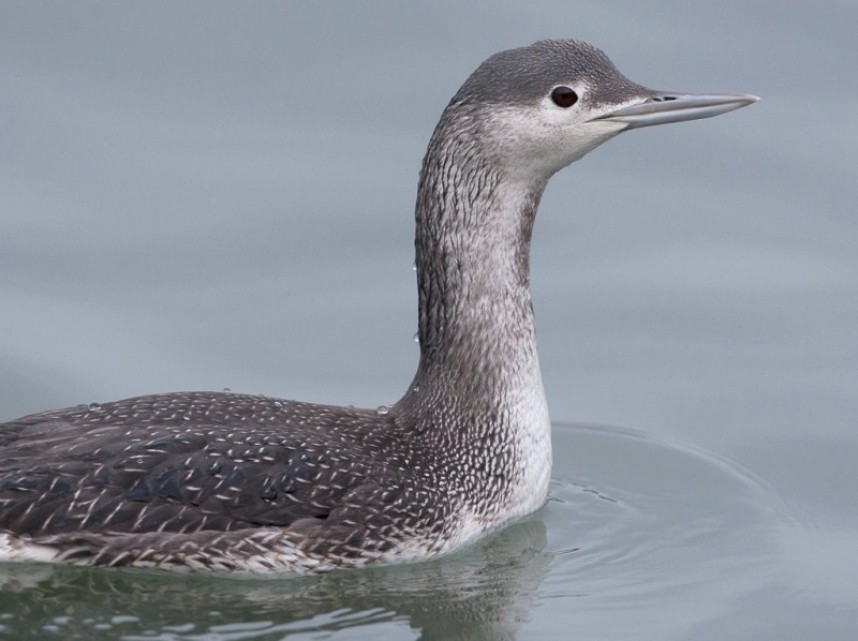
Red-throated Diver Scarborough © Steve Race
Red-throated Diver is our commonest member of this family. Depending on food distribution they can sometimes be found close inshore. They are opportunistic feeders with numbers high on our coastline in September when Herring are in their greatest numbers. Flamborough Headland won the medal for the largest count of migrating Red-throats in the UK in September with 305 counted on the 16th. Numbers dropped off significantly in October with Spurn being the top site on the 1st with 65 birds seen.
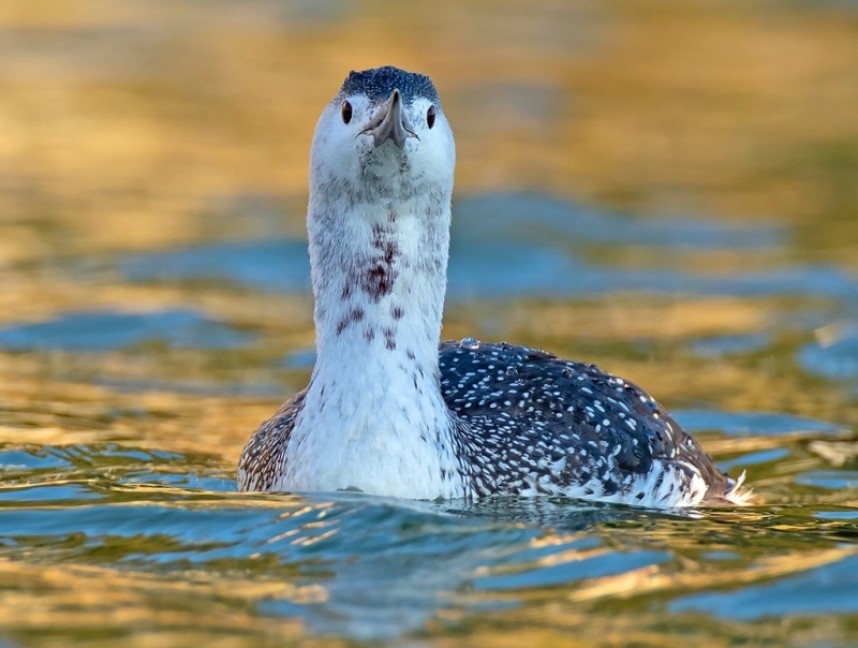
Red-throated Diver Scarborough © Steve Race
September is therefore best month to seek out large numbers but they will be present throughout the winter on our coast. One of the best places to get good views without a telescope is Scarborough Harbour. Filey Bay is also a good place especially during calm conditions and a high tide.
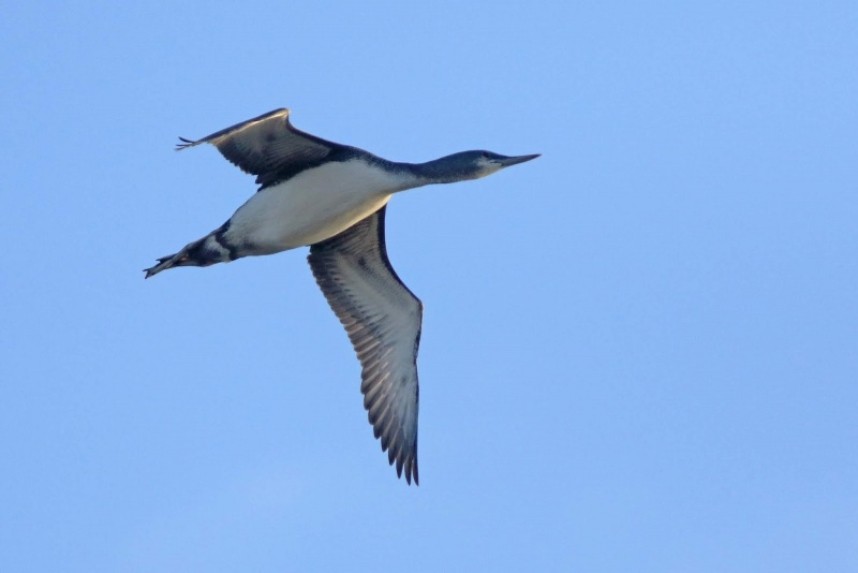
Red-throated Diver over Filey © Mark Pearson
The best features to look for are the relatively small bill and the grey/pale head often held upwards giving the bill a curved impression. The great photos above by Steve Race show this feature very well. All divers moult out of their summer plumage in autumn but if you are lucky you may find an adult Red-throat still sporting its colourful neck in autumn.
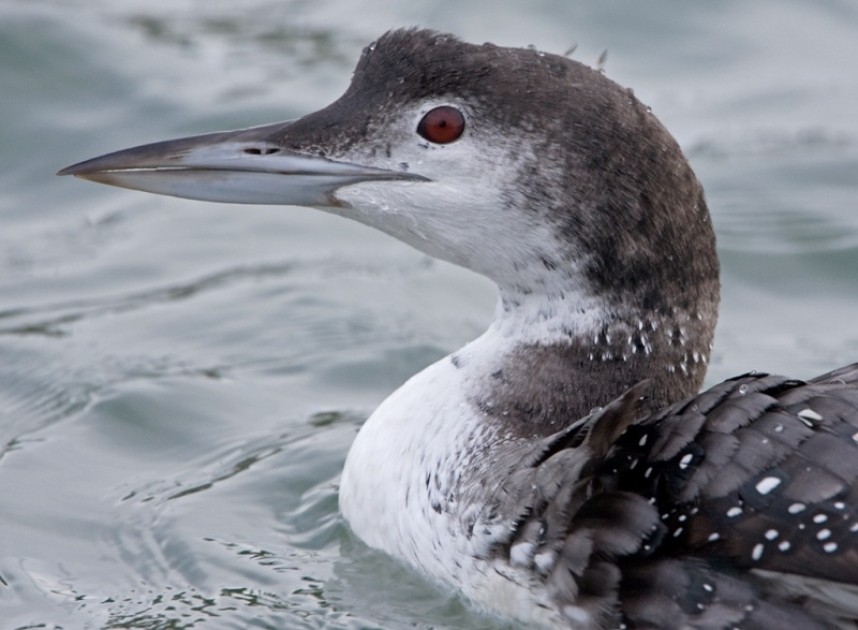
Great Northern Diver Scarborough © Steve Race
Great Northern Divers are the biggest member of the family likely to be found offshore in Yorkshire. Darker winter plumage, large bill held in a horizontal posture and squarer head shape compared to Red-throated Diver are all good characters to remember. They have been recorded diving down to 60m in search of prey. Their powerful bill is often used to spear fish before returning to the surface.
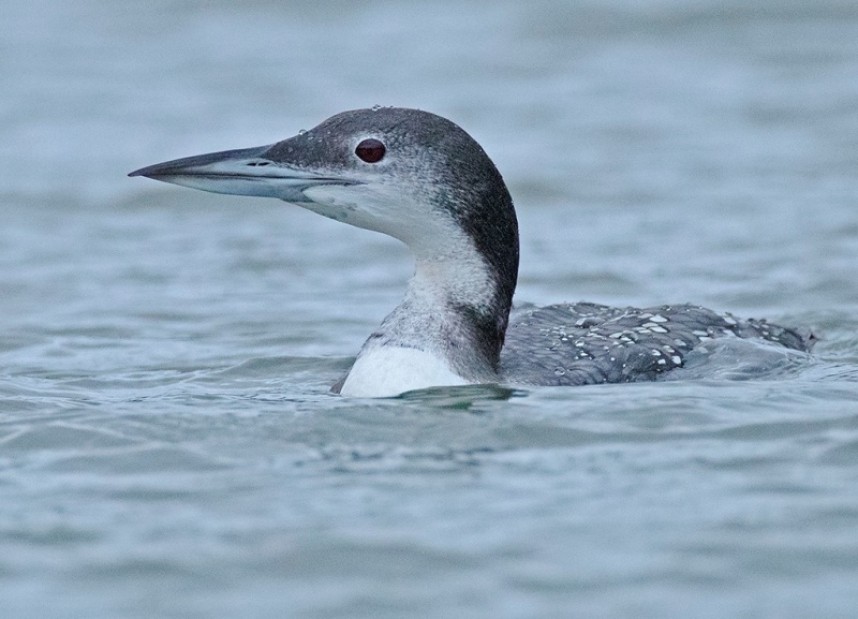
Great Northern Diver Scarborough © Steve Race
Great Northern Divers arrive in autumn on our coastline in much smaller numbers than Red-throats. Peak autumn movements in the UK occur each year on the western coast of Scotland. Despite this Great Northern Divers can be encountered throughout the winter in traditional sites especially in the northern part of our coastline. Scarborough Harbour and Filey Bay are often the best places to find one. They can also linger well into the early spring, there were two summer plumage birds off Hunmanby in April this year.

Red-throated Diver over Filey © Mark Pearson
Black-throated Diver is the least common of the three regularly encountered divers on our coastline. Only approximately 100 birds are thought to winter on the east coast of the UK. They occupy a size and structure between Red-throated and Great Northern. In winter they are often darker on the upperparts than Red-throated and often show a white area near the flanks which can be seen well on this bird below photographed by Mark Pearson in Filey Bay.
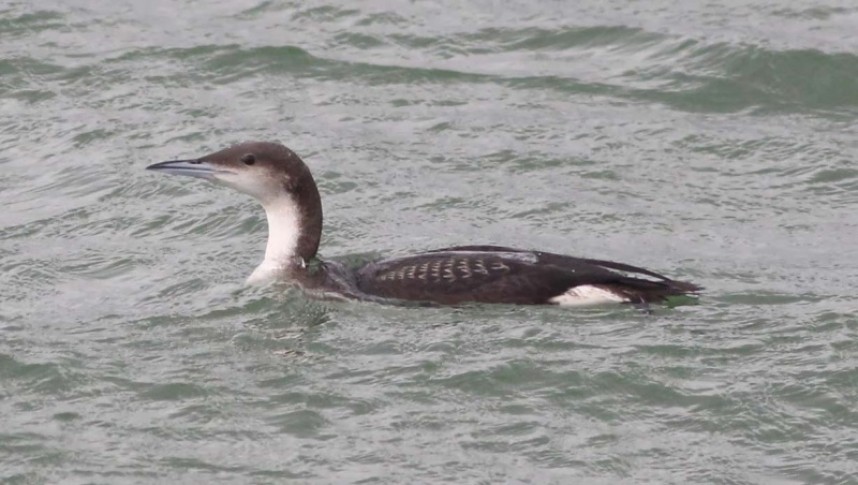
Black-throated Diver Filey Bay © Mark Pearson
Their habitat choice in winter is thought to be more focused on sandy bays than Great Northern and the more generalist Red-throated. The most productive areas on the Yorkshire coast are in the Scarborough area and Filey Bay. They also appear on inland lakes close to the coast in the winter more than the other two divers.
Divers can be tricky to observe for long periods of time. You have to be quick and patient because they can spend up to 60% of their time foraging for food. A study in Sweden found immature Red-throats and Black-throats in their first autumn spent longer under the water in search of food and less overall time feeding than adults. More time on the surface resting and maybe recovering from their long training dives!
Richard Baines
Yorkshire Coast Nature
Photos by Steve Race and Mark Pearson



 Back to Blog
Back to Blog
